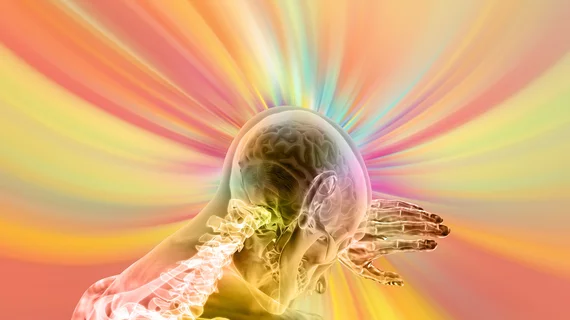Brain imaging scans unlock mysteries about depression and resilience
A new University of Iowa Health Care study of 526 patients with localized brain injuries uncovered two distinct brain networks with impacts on depression symptoms. The findings, published in Brain, could further expand opportunities for researchers to explore neuromodulation therapy as a treatment for depression [1].
In the study, researchers analyzed the locations of patients’ brain lesions in conjunction with their depression symptoms, as identified by the Beck Inventory Assessment. With this information, the authors were able to identify what they referred to as “risk” and “resilience” regions.
“This could open the doors to potential studies looking at deep brain stimulation, or non-invasive forms of stimulation like TMS, where we might be able to modulate the specific brain areas or networks that we've identified, to try to get antidepressant effect, or potentially other therapeutic effects,” lead author Nicholas Trapp, MD, and colleagues write in a news release.
The key takeaways from the study—and one that future studies may be able to build upon—are the locations of “the risk” regions associated with increased depression symptoms and the “resilience” regions associated with fewer symptoms.
Specifically, areas of the brain identified as “risk” regions include the bilateral anterior insula, bilateral dorsolateral prefrontal cortex and left dorsomedial prefrontal cortex. These regions are affiliated with what’s called the “salience network” of the brain, an area typically associated with functions such as task reorientation, attention and emotion processing.
Areas of the brain identified as “resilience” regions include the right orbitofrontal cortex, right medial prefrontal cortex, and right inferolateral temporal cortex, which the authors identified as nodes of the brain’s “default mode network.” The default node network is often associated with introspective thinking, according to the study.
"Previous studies have suggested nodes of this network may be hyperactive in people with depression, who are prone to ruminating," says Trapp, who also is a member of the Iowa Neuroscience Institute. "It's possible that lesions within this network may alter that circuit in a way that leads people to report less depression."
With the World Health Organization estimating that 280 million people suffer from depression worldwide, neuromodulation therapies may have the potential to provide an appealing alternative for pharmacological treatments. Proper targeting, however, seems to hold the key to developing therapies that are effective, and information that helps stakeholders understand the brain science behind depression symptoms will likely play an important role in that development.
